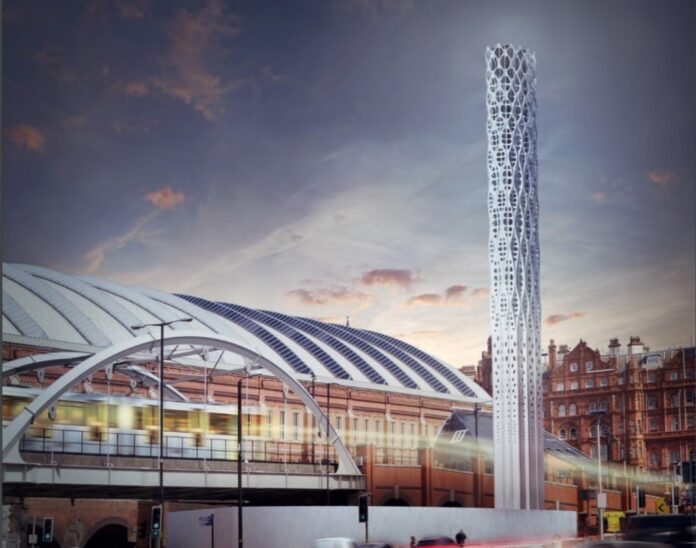The final sections of the 40m high Tower of Light have been installed, marking a significant milestone in the Manchester Civic Quarter Heat Network project.
The tower is made up of nine sections called “drums”, each one measuring 4m wide, 6m long and 4m high, plus a 1.8m crown section. The final sections were added overnight, to minimise local disruption.
Once the Civic Quarter Heat Network project is complete, the Tower of Light will act as the chimney for the low-carbon energy centre. The network will generate low-carbon heat and power for the city, helping Manchester to reach its ambition of becoming zero-carbon by 2038 at the latest. The scheme is projected to save an initial 1,600 tonnes of carbon emissions per year and the energy centre will become even more efficient as additional buildings are connected.
It will initially serve seven iconic city centre buildings and has the potential to grow by connecting further buildings across the city centre in the future. The first buildings to be connected to the network will be Manchester Town Hall and Town Hall Extension, Central Library, Manchester Central Convention Centre, The Bridgewater Hall, Heron House and the Manchester Art Gallery.
Containing a 3.3MWe CHP engine and two 12MW gas boilers, the energy centre will generate electricity and harness the recovered heat from this process for distribution via a 2km district heating network, which will supply heat for the buildings.
The scheme has been part-funded by a £2.87m grant from the Government’s Heat Network Investment Project (HNIP), with Manchester City Council being one of the first local authorities to receive this funding.
Work on the Civic Quarter Heat Network project is scheduled to be completed before the end of 2020.
Manchester City Council’s Executive Member for the Environment, Planning and Transport, Councillor Angeliki Stogia, said: “The Tower of Light is an impressive new landmark for Manchester and a symbol of Manchester’s aim of becoming a zero-carbon city by 2038 at the latest.
“On completion, the Civic Quarter Heat Network project will realise significant carbon savings, supporting the council’s current plan to halve its own emissions by 2025 – which will be an important milestone on the road to the city meeting its ambitious goal.”







